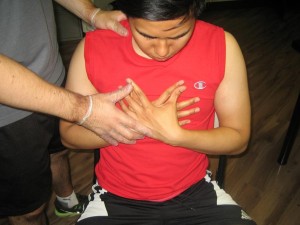An adhesion is a band of scar tissue where it binds 2 parts of tissue or organs together. The adhesions might manifest as thin sheets of tissues or as dense fibrous bands.
The tissue develops once the repair mechanisms of the body respond to any disruptions in the tissues such as infection, surgery, radiation or trauma. Even though adhesions can occur in any region, it typically forms within the abdomen, heart and pelvis.
- Abdominal adhesions – this type of adhesion is a usual complication of surgery.
- Pelvic adhesions – this might involve any organ inside the pelvis such as the ovaries, uterus, bladder or Fallopian tubes and generally occur after surgery such as hysterectomy or C-section.
- Heart adhesions – the scar tissue might form inside the membranes bordering the heart, thus limiting the heart function.
What are the causes?

An adhesion can form as the body tries to heal itself. This typical response can arise after surgery, trauma, infection or radiation. The repair cells inside the body could not distinguish the dissimilarity from one organ to another.
In case an organ undergoes repair and becomes exposed to another part or another body organ, scar tissue is likely to form to link the 2 surfaces.
Adhesions that form above the liver can trigger pain during deep breathing.
Those that form in the intestines can trigger discomfort due to blockage to the movement of the intestinal contents such as food during activity or while stretching. A pericardial adhesion can trigger chest pain.
Remember that not all pain is triggered by adhesions and not all can trigger pain or discomfort.
When to seek medical care
A doctor should be consulted if the individual experiences abdominal pain that does not resolve right away as well as chest pain, pelvic pain or unexplained fever. In case the individual has undergone surgery or has a history of medical conditions, discuss any changes in recovery or the condition with the doctor.
Management
The treatment is based on the site, extent of formation and issues caused by the adhesion. The adhesions typically recover without surgery.
Except if there is an impending surgical emergency, the doctor might deal with the signs rather than carry out surgery. Pain medications, antibiotics, intravenous fluids and other symptomatic treatments are enough to make the symptoms to settle on their own.
